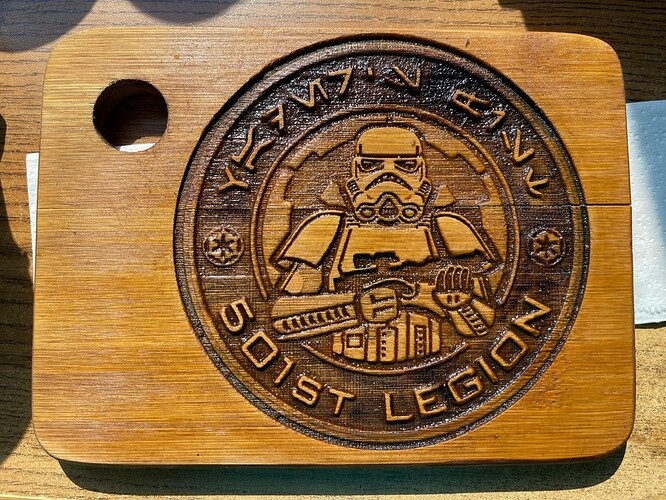It looks nice and dark to me. The shading is nice and uniform too.
I always watch YT videos at 2X speed ![]()
Sometimes I wish for 4X.
(hopefully with the benny hill theme song playing in the background)
You have no baking soda solution left. You engraved through it all. It’s a surface/near-surface level treatment - not sub-surface.
i have boxes of that stuff, but for the cutting board idea, it was a ‘fail whale’
I am sure on other stuff it may be awesome.
Here’s an example of what a baking soda solution does on something like Baltic birch, which doesn’t really engrave with much contrast.
This is on the Trotec, but the same thing applies. Lasers are lasers.
The test is on the left is engraved as vari-power at 40% speed on untreated Baltic birch. The test on the right is on treated Baltic birch and was performed with vari-power and 80% speed.
This test is intended to determine engrave settings by engraving each box at a different power level from 1 to 100% power.
40% speed is about 68 inches per second, 80% speed is about 137 inches per second.
None of the results are really good on the untreated wood. To get decent results, I’d really probably need to go even slower and use very little power with higher LPI - basically “toasting” the wood.
However, the treated wood leaves a much better mark at a way higher speed and lower power. It allows me to get a nice engrave and it doesn’t actually eat or dig down into the wood.
This topic was automatically closed 32 days after the last reply. New replies are no longer allowed.

